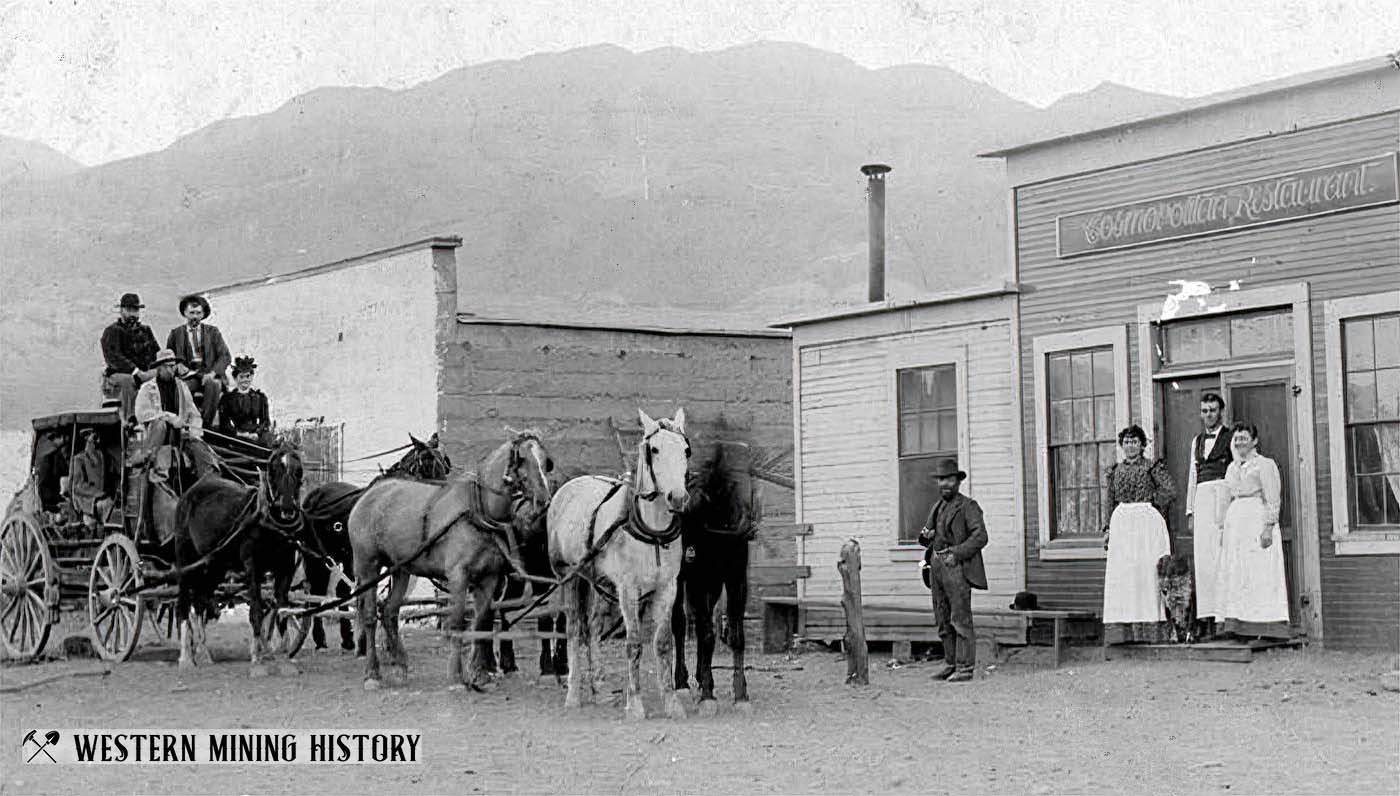Darwin History
Darwin was named after Dr. Darwin French who led an expedition to the area in 1860 and discovered silver at Coso, nine miles from the Darwin site.
Silver was discovered at Darwin in 1874, the same year that the boom to Panamint City occurred nearby in the Panamint range. Darwin's rush was not as frenzied as the rush to Panamint, but by 1875 Darwin was still a sizeable camp with over 700 residents.
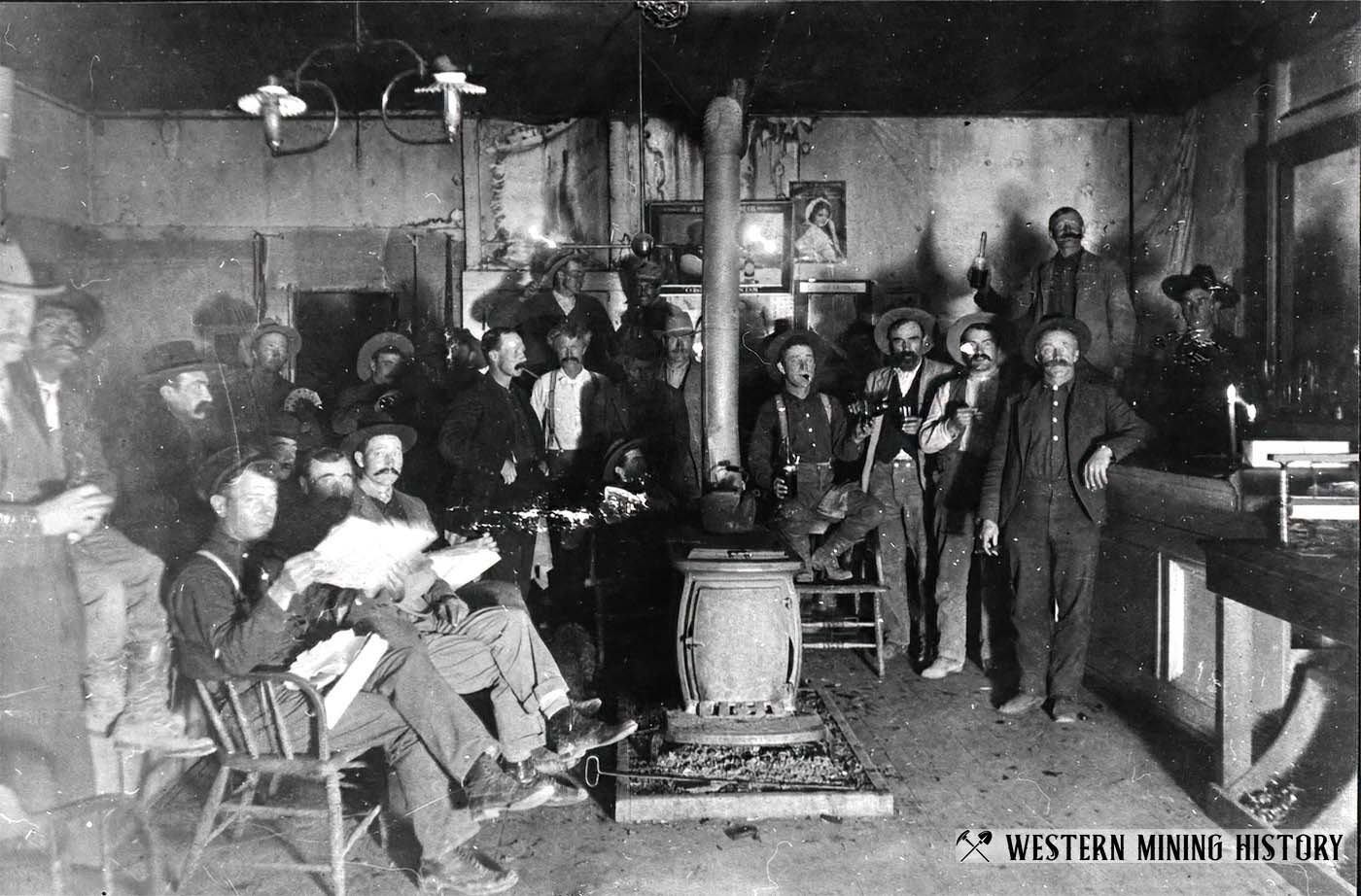
Three smelters–the Defiance, Cuervo, and New Coso–were built in the area during this period. The Defiance mine was one of the earliest mines in the district, and also the largest once it ceased production for the final time in the 1950s. Other mines of note were the Christmas Gift, Columbia, Essex, and Independence. Many of these mines were consolidated when large scale mining of lower grade ores commenced in the 1930s.
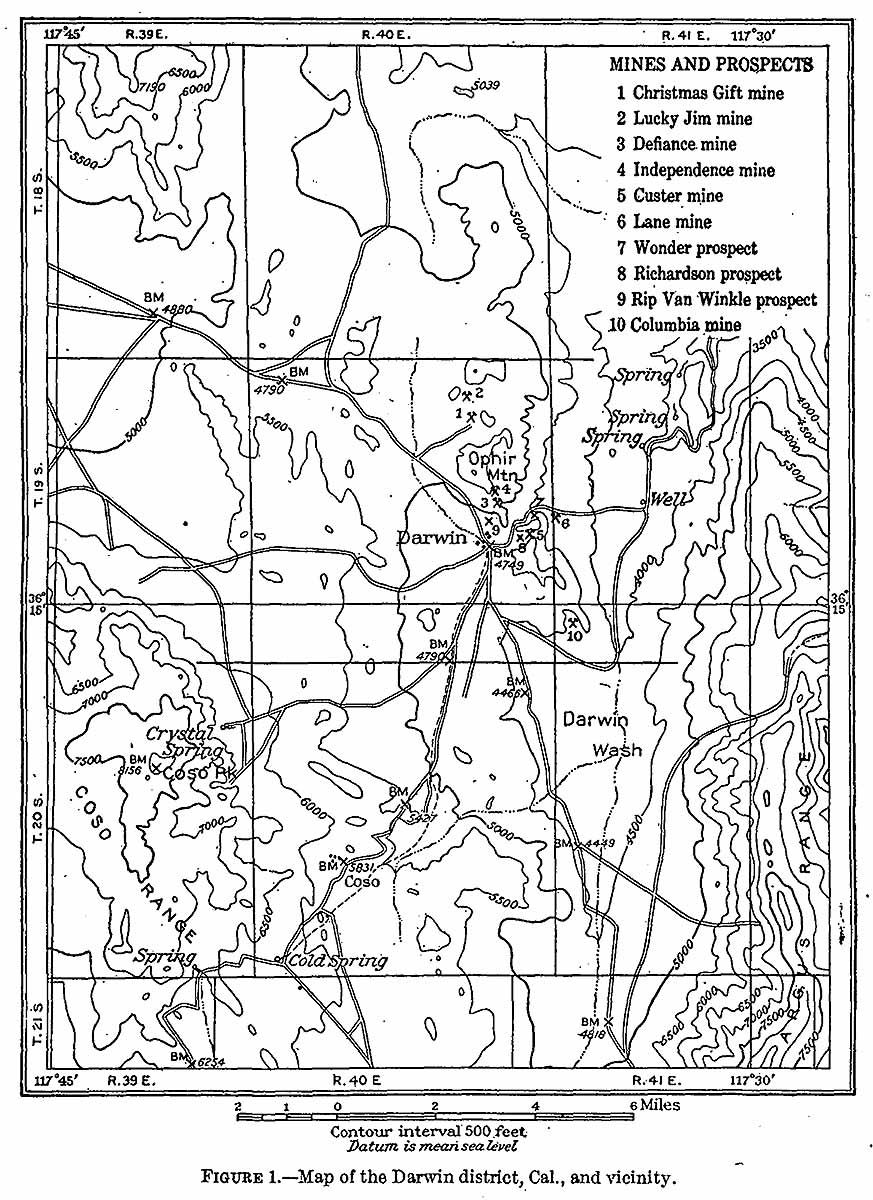
A 1913 report published in Contributions to Economic Geology described conditions in the district:
Expenses were high, because prior to the completion of the railroad to Keeler in 1883, all freight had to be brought across the desert by teams from Los Angeles, a distance of 275 miles.
The richer and more easily mined ore bodies were early exhausted, and as the policy of mining in those days did not consider the wisdom of keeping reserves in advance of extraction, the district soon lapsed into stagnation, occasionally interrupted by periods of moderate activity. The smelters have long been dismantled and destroyed, and the ores now produced are shipped to reduction works at Selby or Salt Lake.
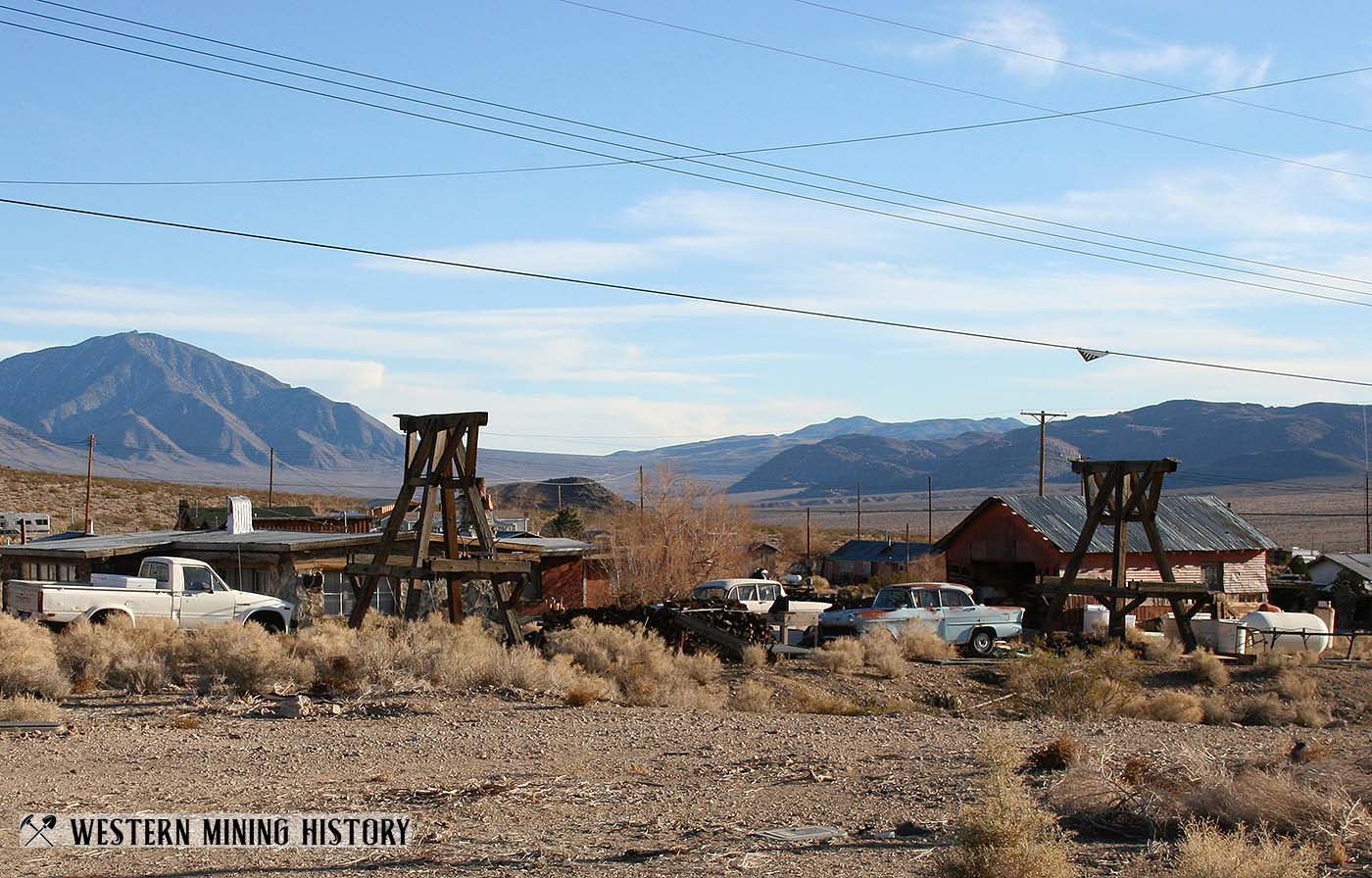
Water had to be piped from a spring in the Coso Mountains eight miles to the Darwin town site, which was a typical problem for the mines and towns of this region. The water was sold to the mines for half a cent per gallon, and one cent per gallon for use by the town. The town was said to have pressurized fire hydrants, which would be a rarity in those days, especially for mining towns of the Death Valley area.
The region between Cerro Gordo and Panamint City, in which Darwin was situated roughly in the center, was one of the most lawless and violent regions in the West. In just the few years of the silver boom between 1874 and 1877, there were said to be at least 80 murders, most of them unsolved. Newspaper articles of the time captured the events related to many of these crimes:
Another horrible murder has occurred. The murdered man was a member of the firm of Perasich & Setrovich, lately engaged in the restaurant business at Panamint. The following statement of the affair is just received from Dave Neagle and James Bruce, who arrived yesterday from Darwin, where the murder was committed.
Which one of the two members of the firm our informants are not positive, but it is believed that Perasich was the unfortunate man. He was sitting quietly eating his dinner in Sullivan's restaurant, when a man entered, and, approaching close to where he sat said 'Pay me the $47.50 you owe me, you s-- of a b----!' and immediately began shooting with a self-cocking pistol.
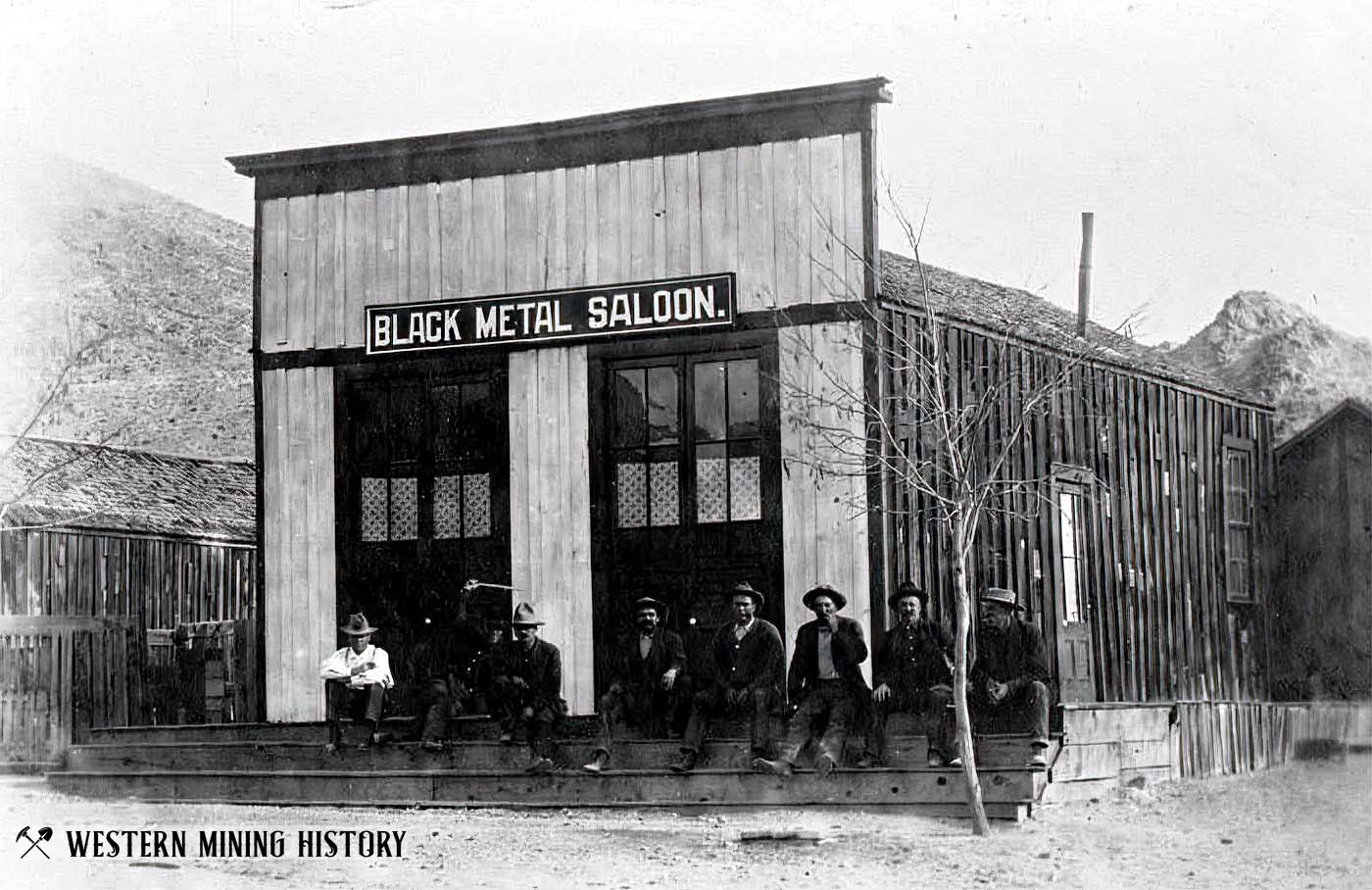
Murder and Reward offered. On the night of September 19th, at Darwin, Inyo county, Nancy Williams, a lodging house keeper, was brutally murdered by some parties as yet unknown. The people there have subscribed a purse of $1,270, which they offer as a reward for the arrest of the murderer.
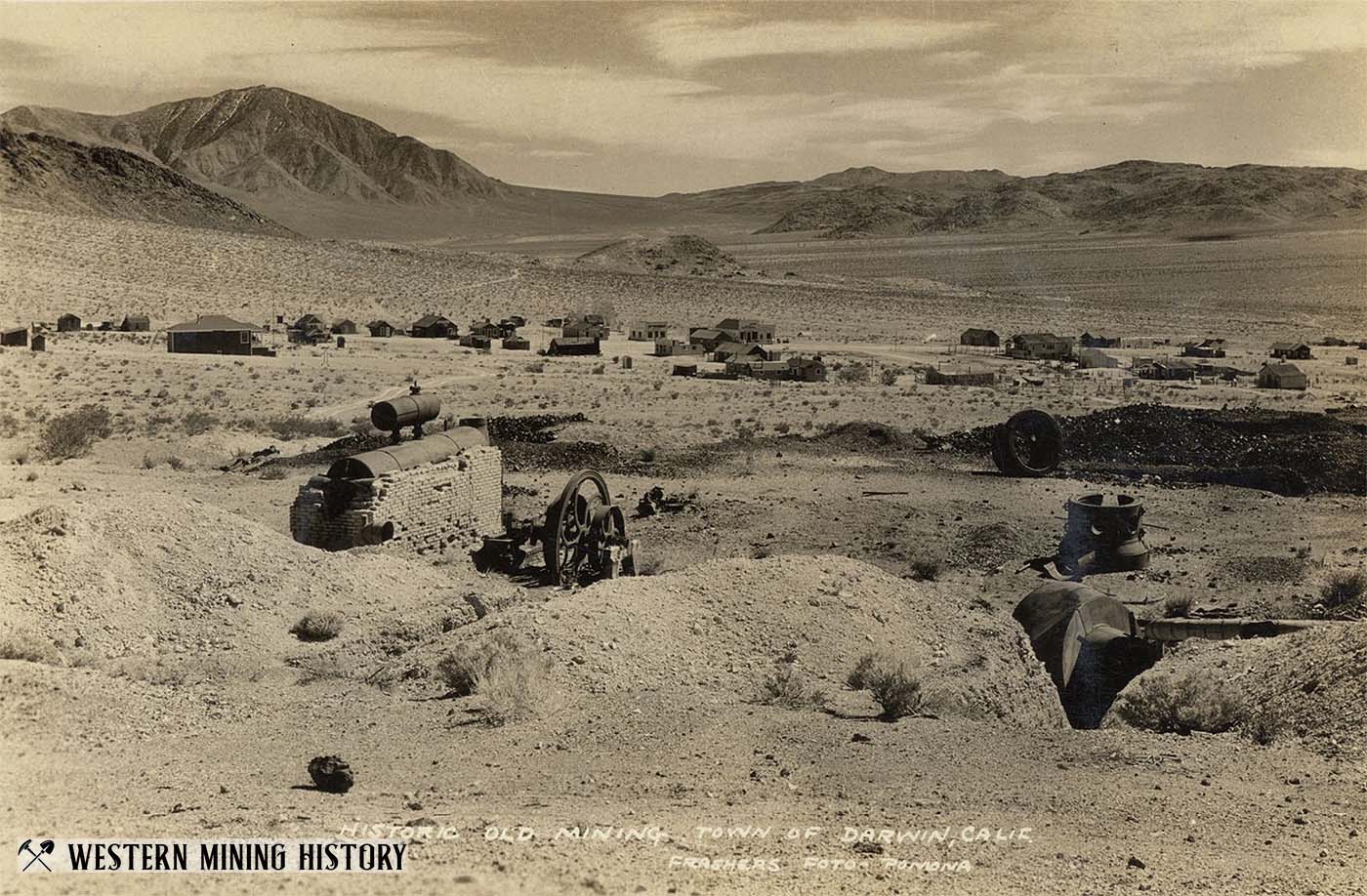
Darwin peaked in 1876 with several thousand residents. An article in an October, 1876 edition of the Daily Alta California describes the excitement about the future of Darwin's mines:
The bullion shipments from Darwin are increasing, and reliable reports say that the mines are looking better than ever before. The Modoc is running out ten tons of bullion per day. The first shipment of 150 bars arrived here today. The bullion is worth $450 per ton, and they have large bodies of rich ore in sight.
1876 was a year marked by optimism in the Darwin mines, but by 1877 the high grade ore began to run out. The mines, and the town, slid into decline.
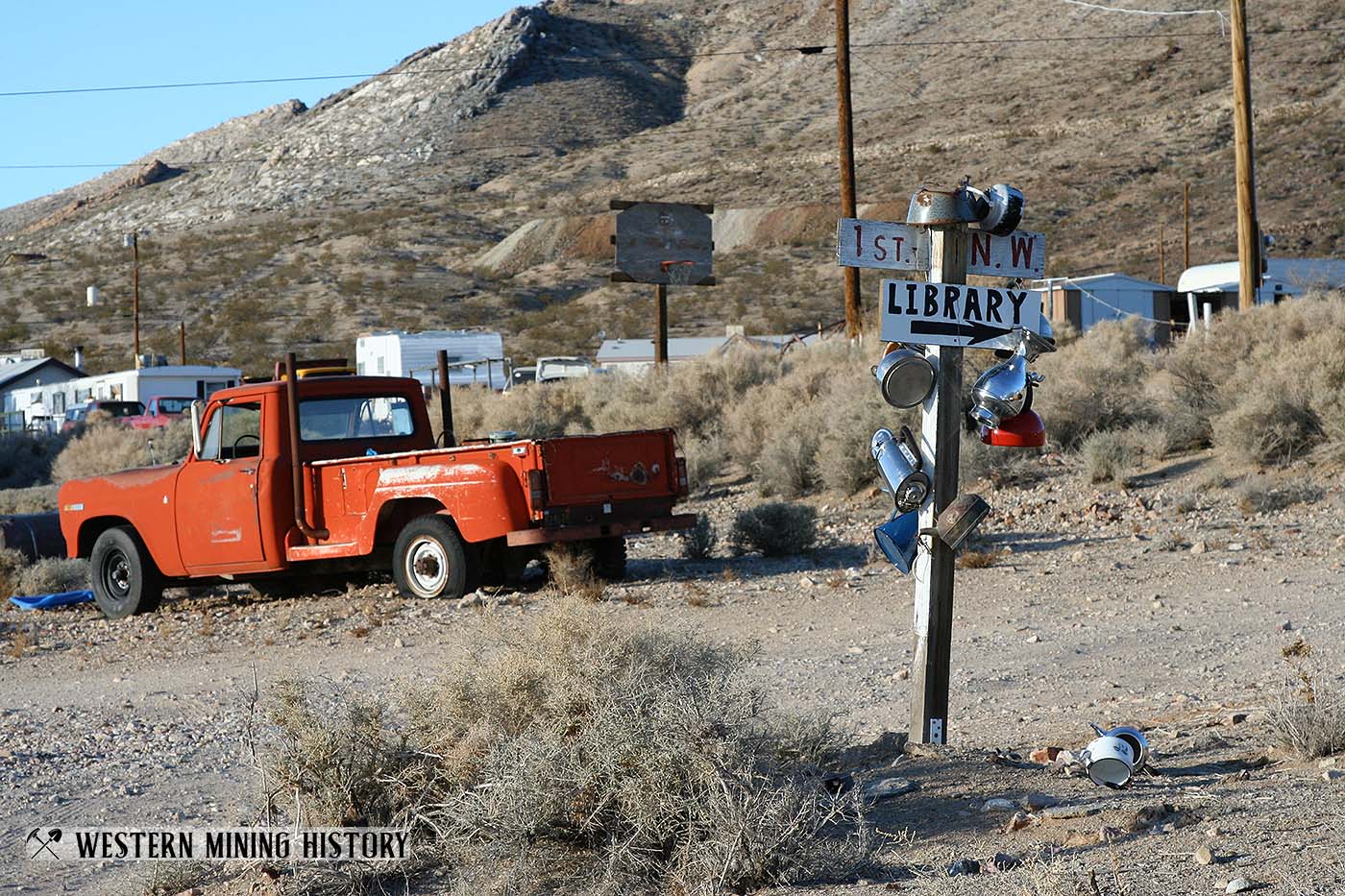
Unlike other towns in the region, Darwin did not die out after the first boom. Darwin mines had a lot of remaining low grade ore that was later exploited by large scale mining operations, most notably after World War I. Mining surged again during the build up to World War II as Darwin's lead and zinc ores became economical to mine.
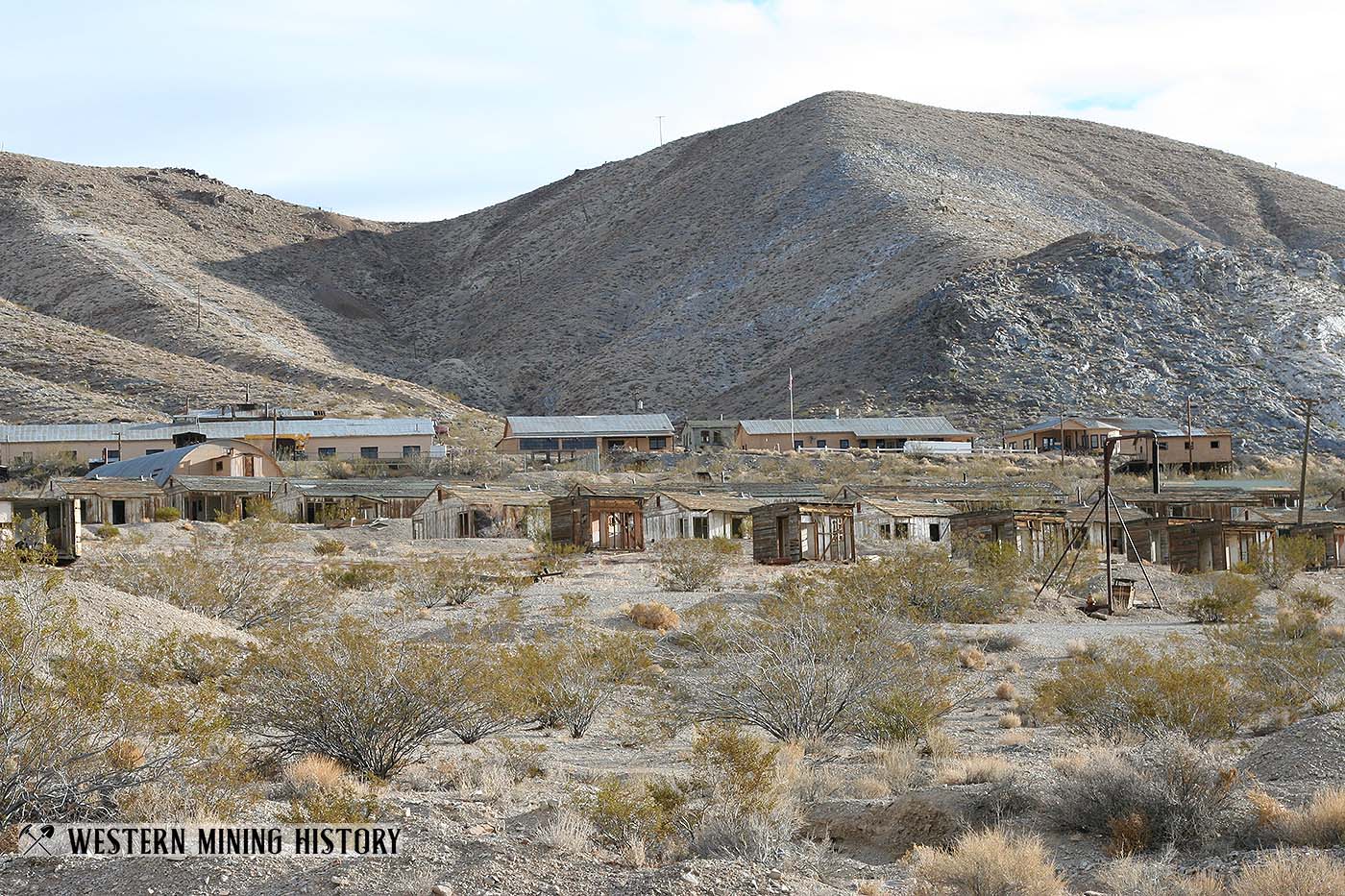
Mining in Darwin continued intermittently until the 1970's, giving the community a longer lease on life than most mining towns in the region. There are still a handful of old homes and commercial buildings left but there are no longer any operating businesses. Remains of a company town built during the most recent round of mining operations can be seen on the hillside just above Darwin.
The Mines and Minerals of Darwin California
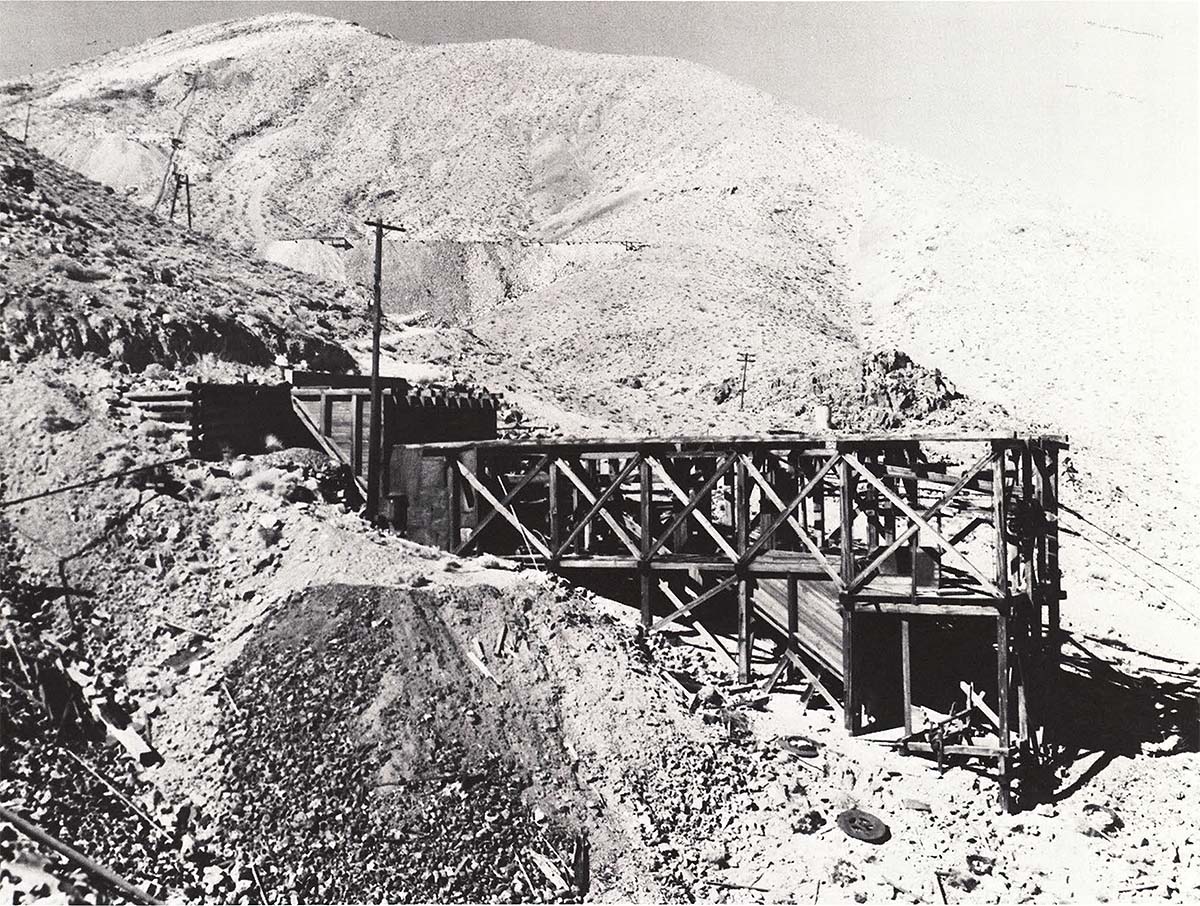
From the Mineralogical Record, Volume 15, No. 1, January-February 1984: “The Darwin district has been a source of lead, silver and tungsten for over 100 years, and nearly 100 different mineral species have been found there. Its long history and interesting mineralogy have made the area popular with California mining historians, economic geologists and mineral collectors.” Continue Reading (members only)
It All Started With The Gold Rush
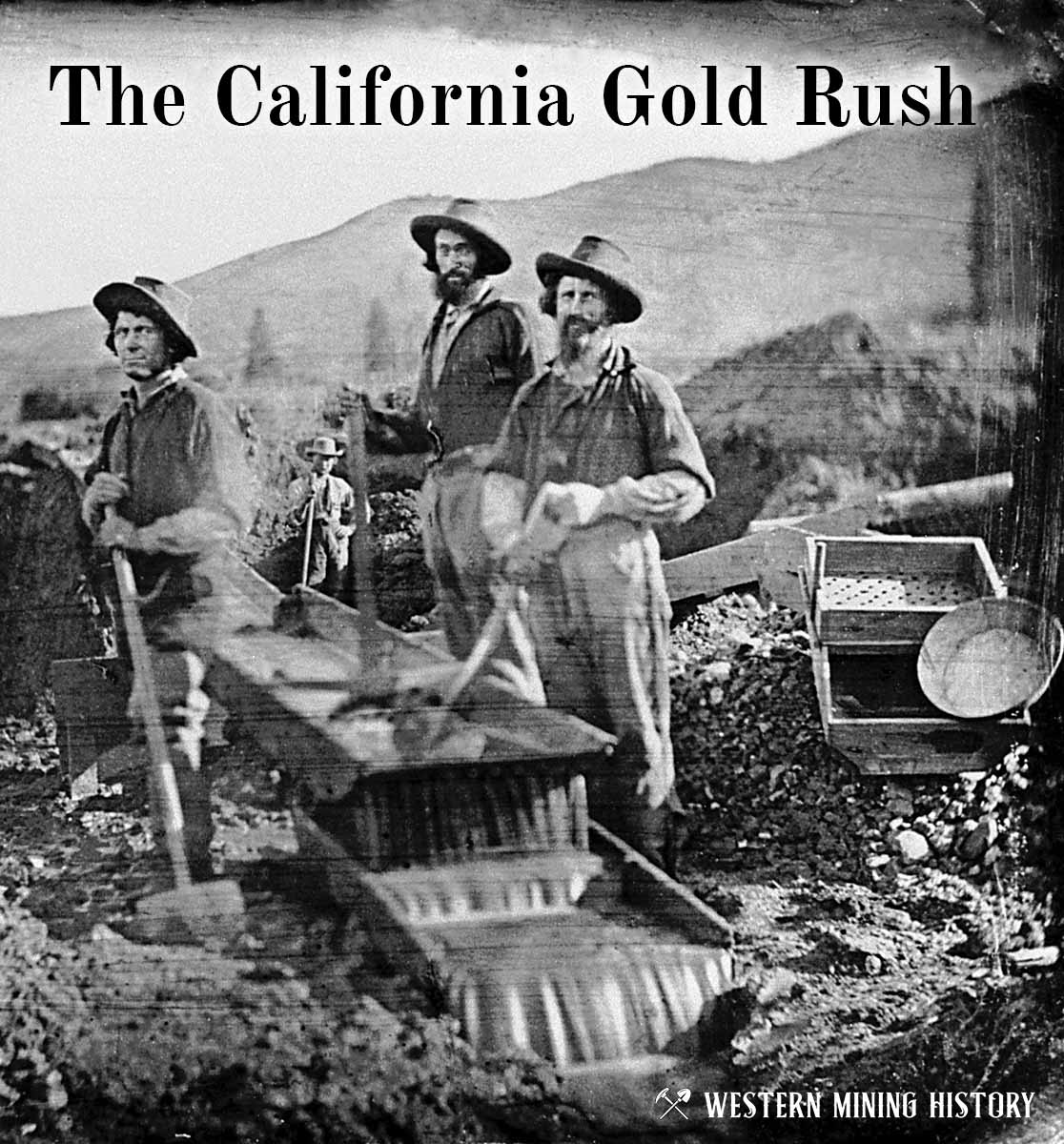
The great California Gold Rush kicked off the entire saga of western mining. Read about it at The California Gold Rush.
California Gold

"Where to Find Gold in California" looks at the density of modern placer mining claims along with historical gold mining locations and mining district descriptions to determine areas of high gold discovery potential in California. Read more: Where to Find Gold in California.
